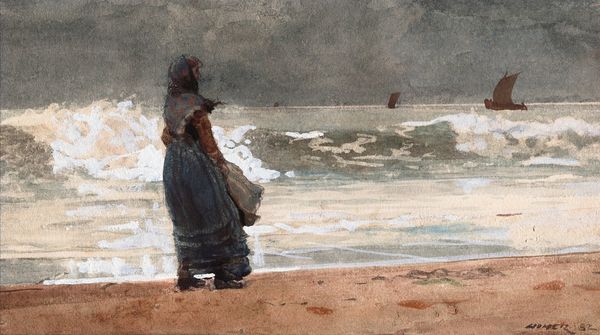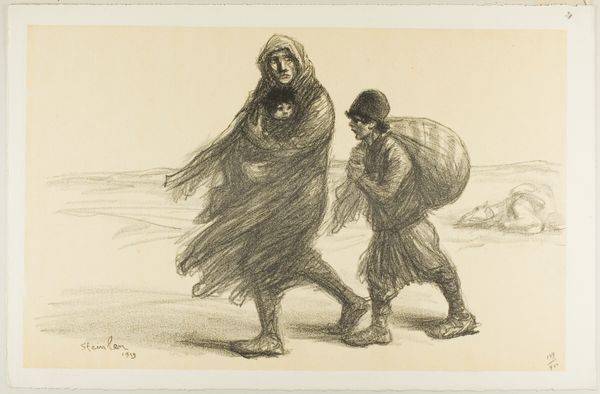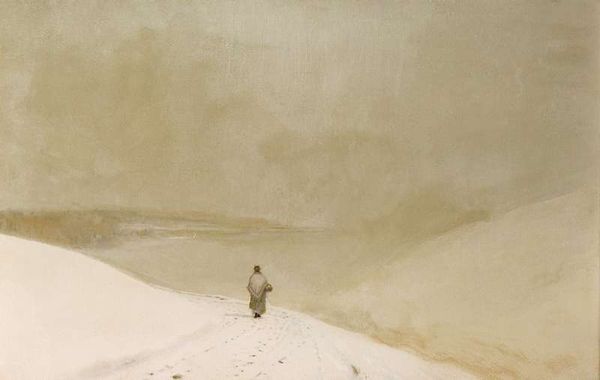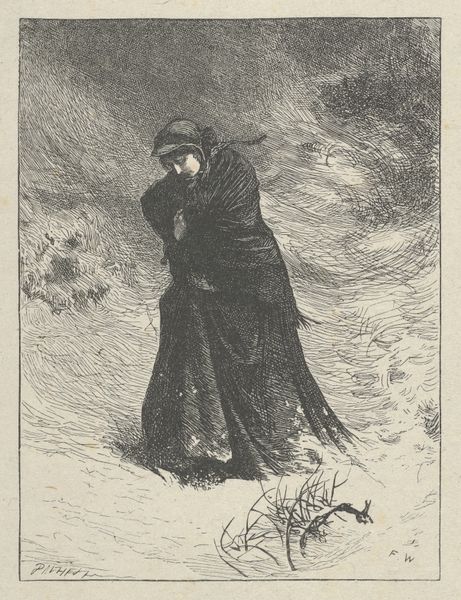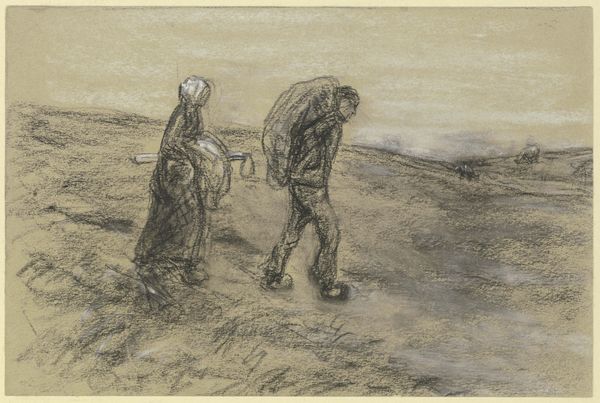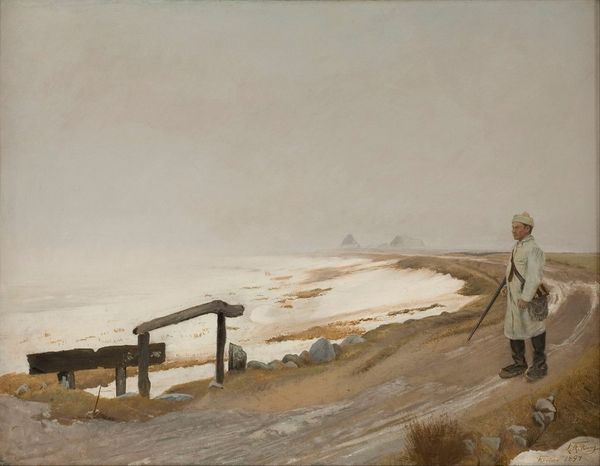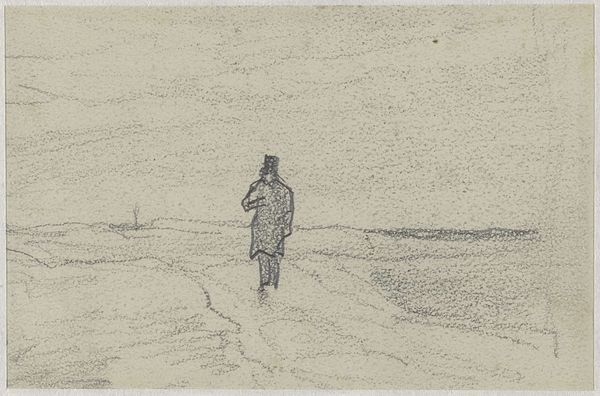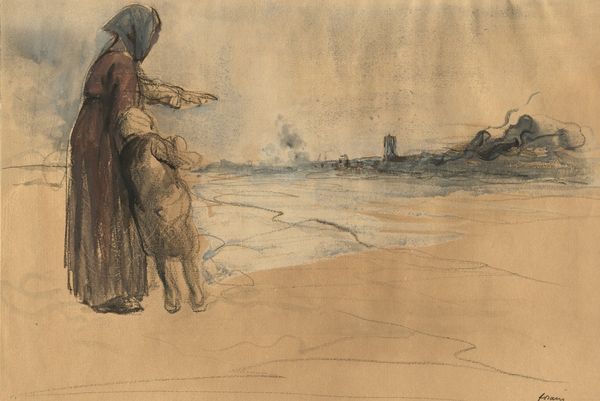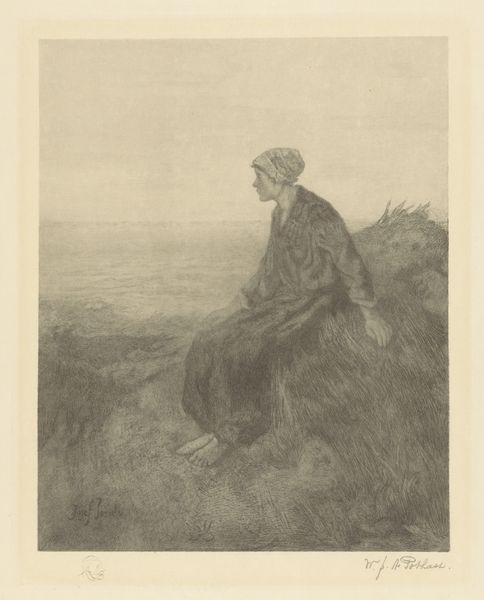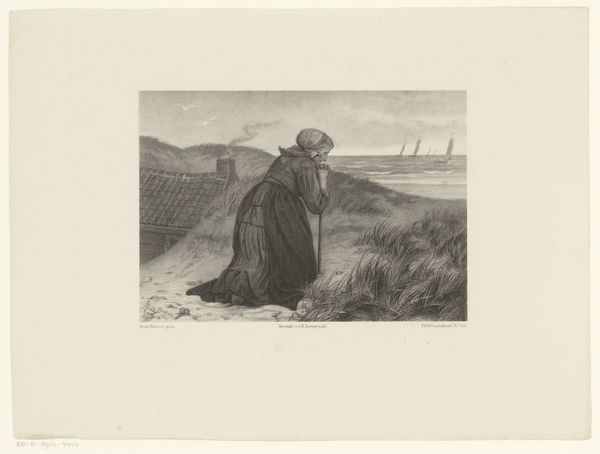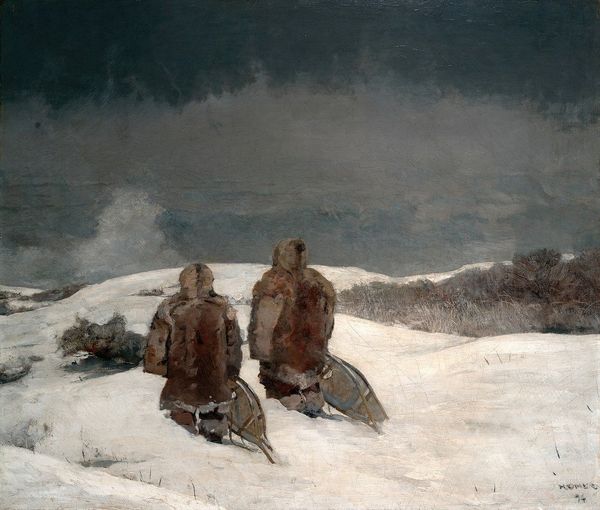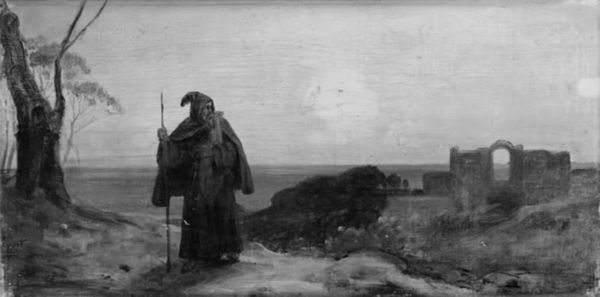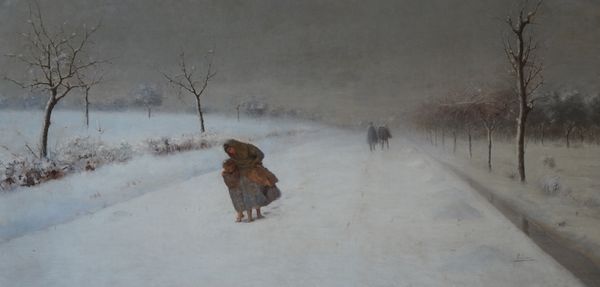
drawing, tempera, paper, watercolor
#
portrait
#
drawing
#
tempera
#
pencil sketch
#
landscape
#
charcoal drawing
#
figuration
#
paper
#
watercolor
#
symbolism
#
watercolor
Dimensions: 50.5 x 67.5 cm
Copyright: Public domain
Curator: The starkness is immediate, isn’t it? So much open space surrounding this solitary figure. Editor: Absolutely. We're looking at "Death's Walk," a tempera, watercolor, and pencil drawing on paper crafted in 1896 by the Finnish artist Magnus Enckell, now housed at the Ateneum in Helsinki. My first thought goes to the color palette: an almost monochrome field. Curator: And the isolation amplifies everything. Notice how the dark, cloaked figure, presumably death, becomes the focal point, a silhouette trudging across this vast expanse of white. There's a cultural memory embedded in these images of death as a cloaked traveler, but the setting…it feels psychologically barren, like a landscape of grief itself. Editor: It’s compositionally sparse. Enckell uses the negative space—the white of the paper—as a powerful compositional element. The figure is slightly hunched, moving across a clearly defined horizon line. Even with that defined horizon, there's very little perspective. The effect flattens the space and reinforces the sense of oppressive expanse. Curator: The slight stoop really speaks to the burdens carried. Symbolically, the figure isn’t just death, but also despair, the exhaustion of living. I keep looking for some glint of hope in the horizon but there is only the implied erasure that death promises. Editor: See the handling of the garments; those dense areas of color help delineate depth of field on closer inspection. There’s texture there—an almost tactile rendering of the fabric—a striking counterpoint to the ethereal background that provides visual intrigue beyond symbolic weight. Curator: The enduring symbol of death remains powerful, but within a Symbolist framework, the image moves beyond mere memento mori, prompting introspection about life’s brevity, the psychological weight that burdens the body. The journey, its meaning, becomes more palpable than its endpoint. Editor: I see your point. Looking at it through the lens of symbolism versus formalism allows the artwork to become so much more—this artwork shows how much symbolism can alter perspective on a drawing’s meaning. Curator: Exactly, Enckell compels us to remember that what walks alongside death are all the human anxieties about finitude. Editor: Well said.
Comments
No comments
Be the first to comment and join the conversation on the ultimate creative platform.

